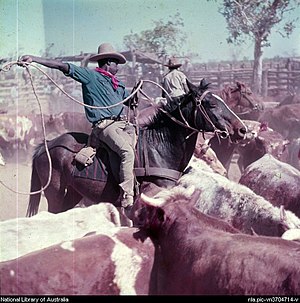IND/Strategies for Working with Indigenous People
The diversity of Indigenous communities across Australia means that a successful work strategy or program in one area may be seen as a failure in a similar community in another part of the country. However, there are also clear successful frameworks which can and should be followed, and which are based in the understanding of differences between communities.
When it comes to thinking about the best ways to approach overcoming Indigenous disadvantage, it is commonly believed that everything has already been tried and nothing works, or that no one knows what policies or programs work. This is not the case. Over the past 10-15 years an enormous amount of research has been conducted in this area with clear and coherent results.
In 2009, Gary Banks, then Chairman of the Australian Productivity Commission, observed that:
| “ | with some exceptions, Australia has squandered the opportunity to learn systematically from these diverse experiences [in Indigenous programs] in order to identify those that could make a difference if applied nationally (p. 14). | ” |
- Cooperative approaches between Indigenous people and government, often involving non-profit and private sectors as well.
- Community involvement in program design and decision-making — a ‘bottom-up’ contribution, rather than just relying on ‘top-down’ direction. (There are many instances of governments designing programs that have resulted in unintended perverse consequences through lack of community input.)
- Good governance — at organisation, community and government levels [is. This is needed in both Indigenous communities and organisations, and within government itself
- Ongoing government support — including human, financial and physical resources.Often promising programs that have initially been very successful lose momentum for want of sustained government support.
Significantly, it concluded that the absence of any one of these factors can result in program failure.
A recent report from the Closing the Gap Clearinghouse (2011) similarly identified the key elements that work to ‘close the gap’ between Indigenous and non-Indigenous Australians. This also specified ‘What doesn’t work’ as follows:
- ‘One size fits all’ approaches.
- Lack of collaboration and poor access to services.
- External authorities imposing change and reporting requirements.
- Interventions without local Indigenous community control and culturally appropriate adaptation.
- Short-term, one-off funding, piecemeal interventions, provision of services in isolation and failure to develop Indigenous capacity to provide services.
It is an important part of the process to evaluate programs or work practices for critical elements of success. This means identifying those factors that may have been external as well as those factors that were internal to the practice.
Banks (2009, p. 14) further observed that ‘for policy making purposes there is no substitute for detailed evidence-based assessments and reviews of specific programs.’ The need for specific and accurate knowledge and understanding is key. This is one of the reasons why we have been directing you towards reliable sources of information throughout this subject.
